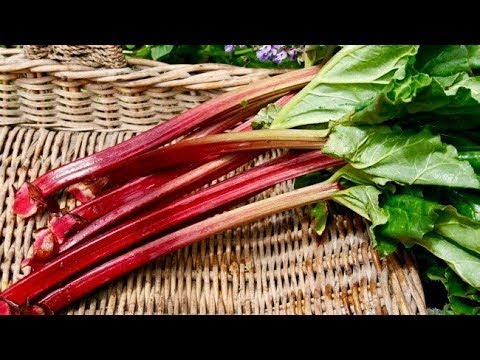This report provides a thorough summary of Rhubarb Benefits, including its applications and possible health benefits.
Rhubarb is a vegetable known for its reddish stalks and sour taste.
In Europe and North America, it is cooked and frequently sweetened.
What’s rhubarb?

Rhubarb is renowned for its sour taste and thick stalks, which are typically cooked with sugar.
The stalks range in colour from red to pink to pale green and have a consistency that’s similar to celery.
This vegetable requires cold winters to develop. Because of this, it is mainly located in mountainous and temperate areas around the world, particularly in Northeast Asia. It’s also a common garden plant in North America and Northern Europe.
Several varieties and species exist. From the West, the most common variety is called culinary or garden rhubarb (Rheum x hybridum).
How can it be used?

Rhubarb is a unusual vegetable as it’s quite sour and slightly sweet.
E to its sour taste, it is rarely eaten raw. On the contrary, it’s usually cooked — either sweetened with sugar used as an ingredient.
It was not until the 18th century, when sugar became more economical and readily available, that rhubarb turned into a popular food.
Before that, it was mainly used medicinally. In fact, its dried roots have been used in traditional Chinese medicine for centuries.
Only the stalks are consumed, most commonly in candy sauces, sauces, sauces, pies, tarts, crumbles, cocktails, and rhubarb wine.
As sweet rhubarb pies are a traditional dessert in the United Kingdom and North America, this vegetable may be known as”pie plant”
Nutrient content of rhubarb
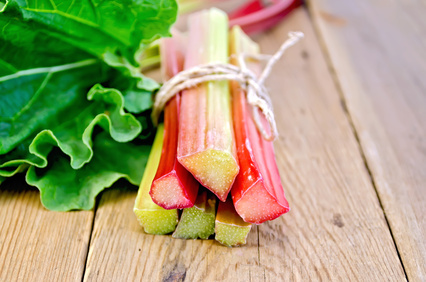
Rhubarb isn’t especially full of vital nutrients, and its calorie content is low.
However, It’s a Really good supply of vitamin K1, providing around 26–37% of the Daily Value (DV) at a 3.5-ounce (100-gram) serving determined by whether it is cooked
Like other fruits and vegetables, it’s also high in fiber, providing similar amounts as oranges, apples, or celery.
A 3.5-ounce (100-gram) serving of cooked rhubarb with Additional sugar comprises
Calories: 116
Carbs: 31.2 grams
Fiber: 2 grams
Protein: 0.4 g
Vitamin K1: 26 percent of the DV
Magnesium: 15% of the DV
Vitamin C: 6 percent of the DV
Potassium: 3% of the DV
Folate: 1% of the DV
Although there are decent amounts of calcium in rhubarb, it’s mainly in the kind of the antinutrient calcium oxalate. In this type, your body can not absorb it efficiently
It’s also moderately high in vitamin C, boasting 6 percent of the DV in a 3.5-ounce (100-gram) functioning.
Health benefits of rhubarb
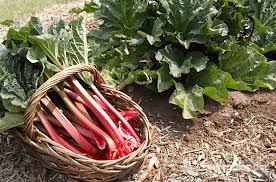
Studies on the health benefits of rhubarb are limited.
But a few studies have analyzed the effects of isolated rhubarb stalk components, like its fiber.
May lower cholesterol levels
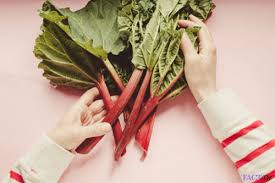
Rhubarb stalks are a fantastic source of fiber, which may impact your cholesterol.
In one controlled study, men with high levels ate 27 g of rhubarb-stalk fiber daily for a month. Their total cholesterol dropped by 8% and their LDL (bad) cholesterol by 9%
This beneficial impact is not exclusive to rhubarb fiber. Many other fiber sources are equally powerful
Provides antioxidants
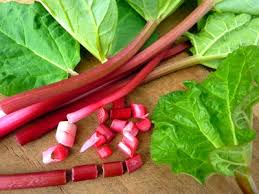
One study indicates that its total polyphenol content might be even higher than that of kale.
The antioxidants in rhubarb contain anthocyanins, which are liable for its reddish color and believed to provide health benefits. Rhubarb can also be full of proanthocyanidins, also known as condensed tannins
Rhubarb is possibly the most sour-tasting vegetable you can find.
Its acidity is mainly due to the high levels of malic and oxalic acid. Malic acid is one of the most abundant acids in plants and contributes to the sour taste of many Produce
Interestingly, growing rhubarb in darkness makes it less sour and more tender. This variety is known as forced rhubarb, which can be increased in spring or late winter.
Security and side effects
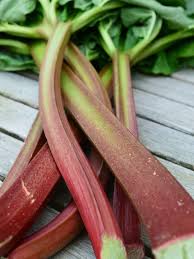
In fact, according to folk tradition, rhubarb shouldn’t be harvested beyond late June, as oxalic acid levels are thought to rise from spring into summer.
This substance is very abundant in the leaves, but the stalks might also contain high quantities, based on the variety.
Too much calcium oxalate may lead to hyperoxaluria, a serious condition characterized by the accumulation of calcium oxalate crystals in various organs.
These crystals can form kidney stones. Sustained hyperoxaluria can lead to kidney failure
Not everybody responds to dietary oxalate in the same way. Some people are genetically predisposed to health problems Related to oxalates
Vitamin B6 deficiency and Higher vitamin C intake could also increase your risk
Furthermore, growing evidence indicates this problem is significantly worse for those who lack certain beneficial gut bacteria. Interestingly, some gut bacteria, for example Oxalobacter formigenes, degrade and neutralize dietary oxalates
Although reports of rhubarb poisoning are rare, be sure to consume it in moderation and prevent the leaves. What is more, cooking your rhubarb can decrease its oxalate content from 30–87%
How to cook rhubarb

Rhubarb can be eaten in several of ways. It is usually utilized in desserts and jams, which contain plenty of additional sugar.
That said, it’s easy to use in low-sugar recipes — or cooked with no sugar at all.
A few creative ideas comprise rhubarb salad and healthy rhubarb crumble. It is also possible to incorporate this vegetable or its jam to your morning oatmeal.
The bottom line
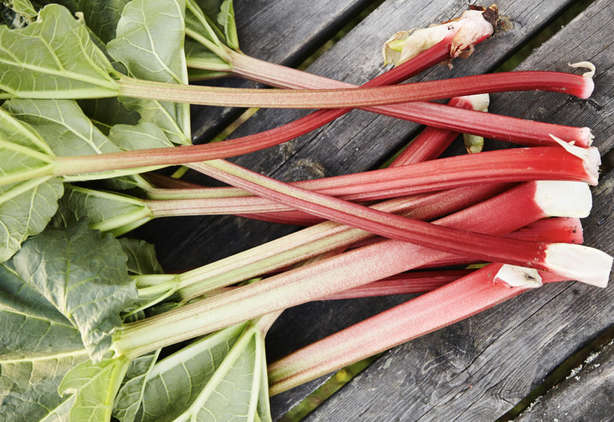
Rhubarb is a exceptional vegetable people use in baking and cooking.
As it might be full of oxalate, you should avoid eating a lot of it and try to select stems from low-oxalate types. If you’re prone to kidney stones, it may be best to prevent rhubarb altogether.
On the bright side, rhubarb is a fantastic source of antioxidants, vitamin K, and fiber.
Furthermore, its sour taste makes it an ideal ingredient in jams, crumbles, pies, and other desserts.
Comments
0 comments
